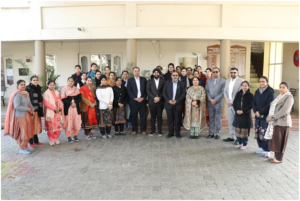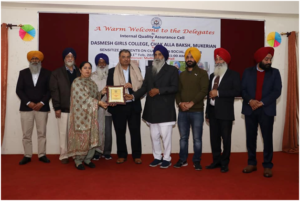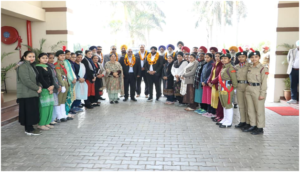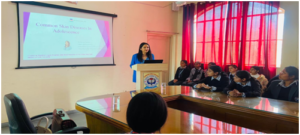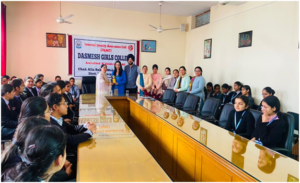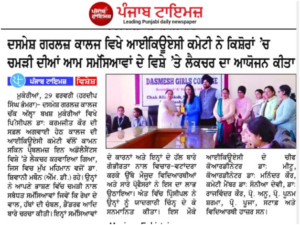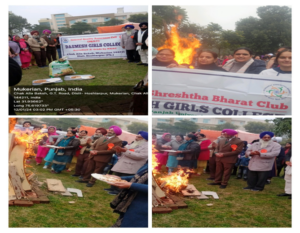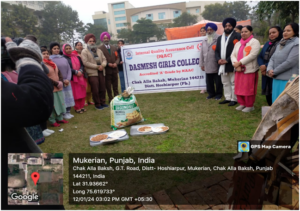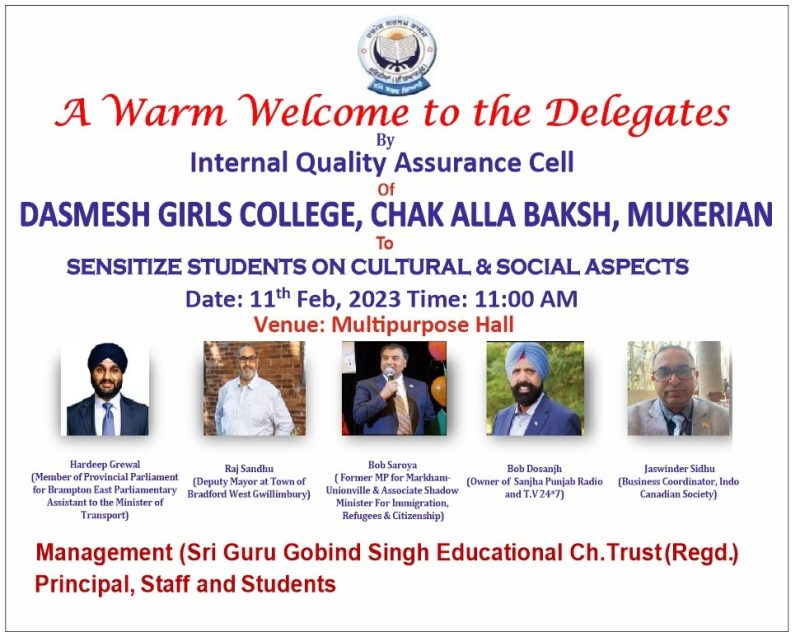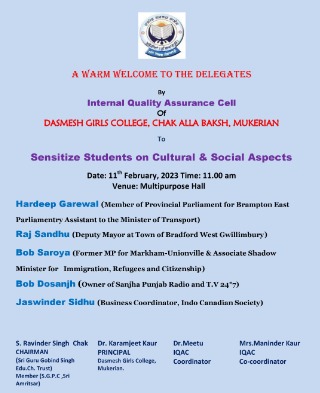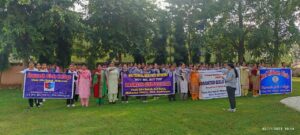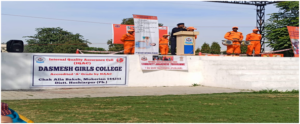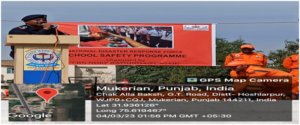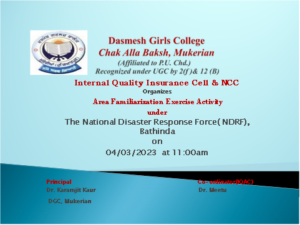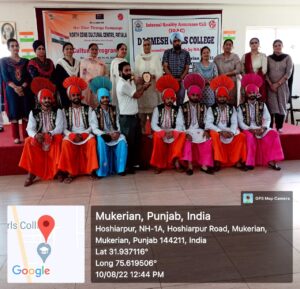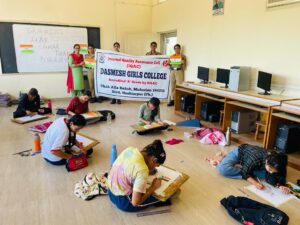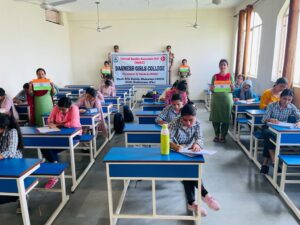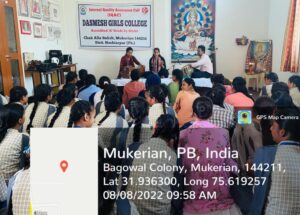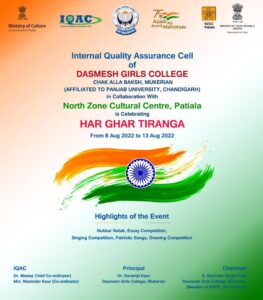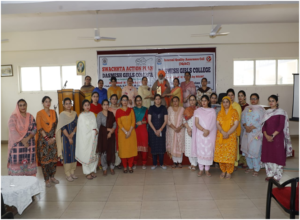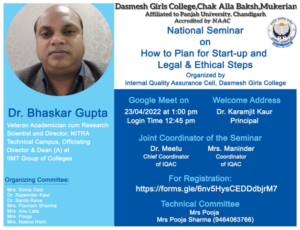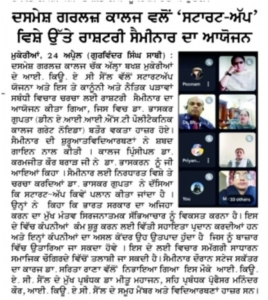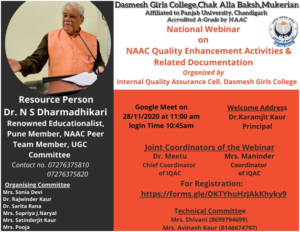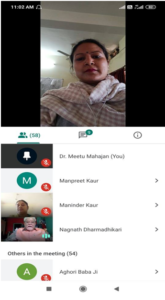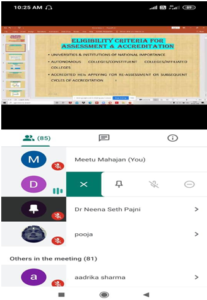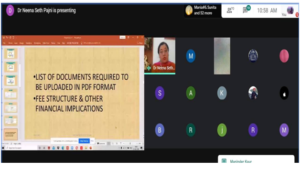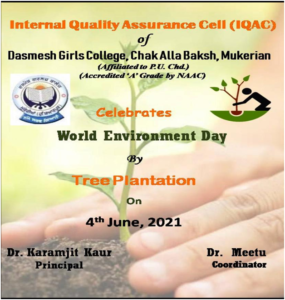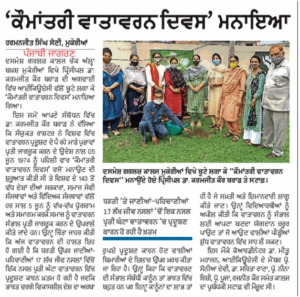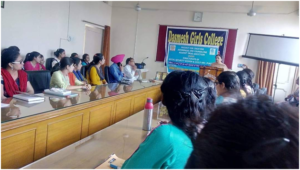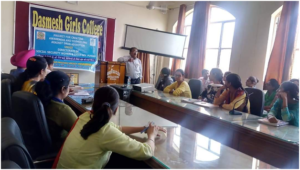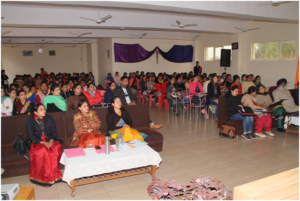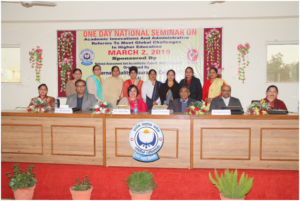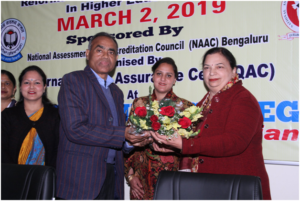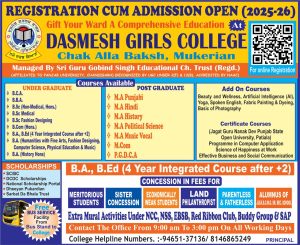Session (2022-23)
Internal Quality Assurance Cell of Dasmesh Girls College, Chak Alla Baksh, Mukerian organized a Warm Welcome to the Delegates S Hardeep Grewal Member of Provincial Parliament for Brampton East Parliamentary Assistant to the Minister of Transport, S. Raj Sandhu, (Deputy Mayor at Town of Bradford West Gwillimbury, S Bob Saroya (Former MP for Markham Unionville & Associate Shadow Minister for Immigration, Refugees and Citizenship), S. Bob Dosanjh (Owner of Sanjha Punjab Radio and T.V, 24*7) and S. Jaswinder Sidhu, Business Coordinator, Indo Canadian Society) and Gurpreet Chahal to Sensitize the students on Cultural & Social Aspects’ on 11 February 2023. After the formal welcome by S Ravinder Singh Chak, Chairman (Sri Guru Gobind Singh Edu. Ch. Trust), Member (SGPC, Sri Amritsar), Worthy Delegates shared their valuable views with students and motivated them for self motivation and to improve themselves physically as well as mentally so that they can cope up with all difficulties . They suggested the students to improve their skills in all new technology and language. Dr Karamjeet Kaur, Principal of Dasmesh Girls College gave a vote of thanks to all the eminent personalities. On this occasion, Members of Management (Sri Guru Gobind Singh Edu. Ch. Trust), Members of IQAC, all the staff members and students were present.
